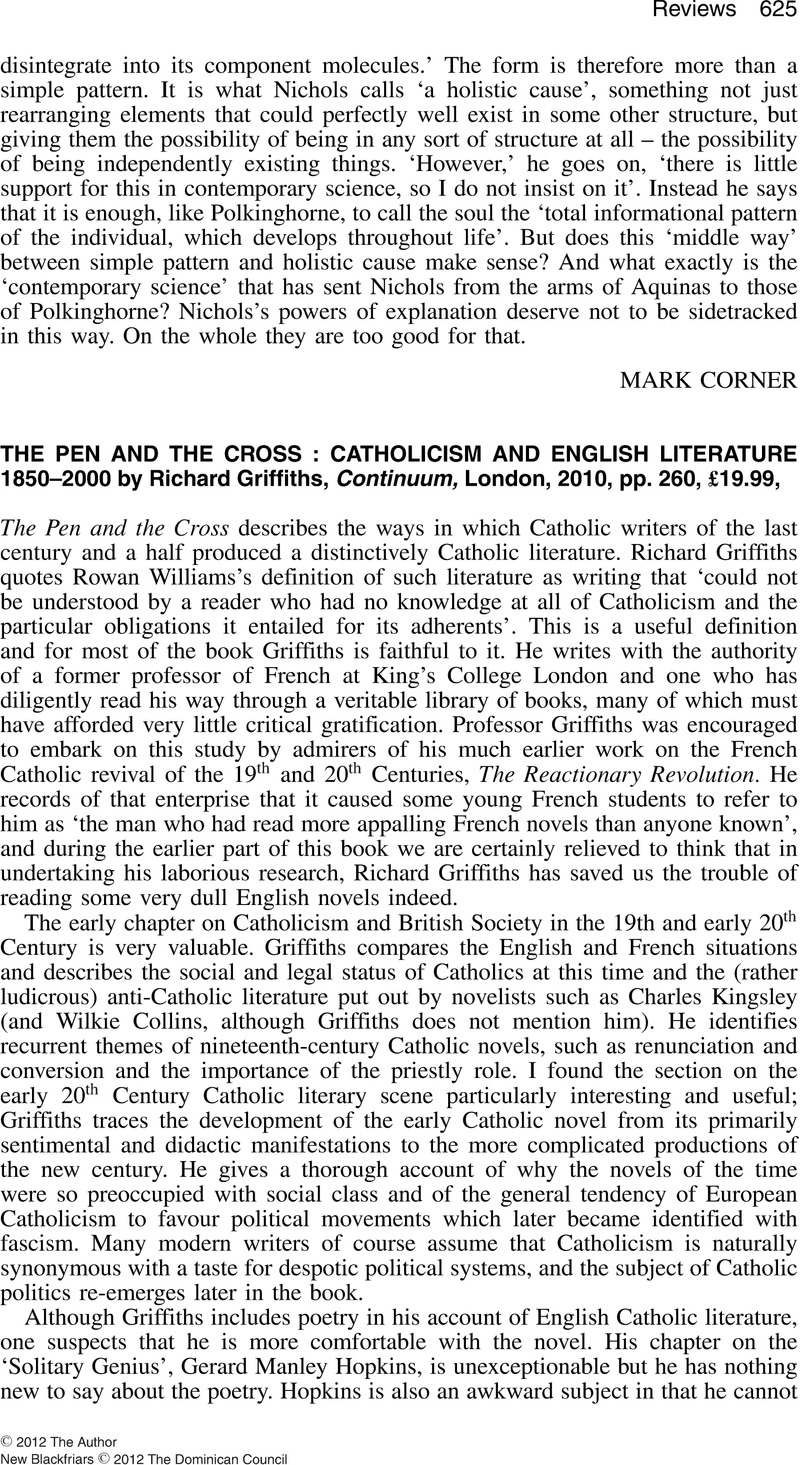No CrossRef data available.
Article contents
The Pen and the Cross: Catholicism and English Literature 1850–2000 by Richard Griffiths, Continuum, London, 2010, pp. 260, £19.99,
Review products
The Pen and the Cross: Catholicism and English Literature 1850–2000 by Richard Griffiths, Continuum, London, 2010, pp. 260, £19.99,
Published online by Cambridge University Press: 01 January 2024
Abstract
An abstract is not available for this content so a preview has been provided. Please use the Get access link above for information on how to access this content.

- Type
- Reviews
- Information
- Copyright
- © 2012 The Author. New Blackfriars © 2012 The Dominican Council


